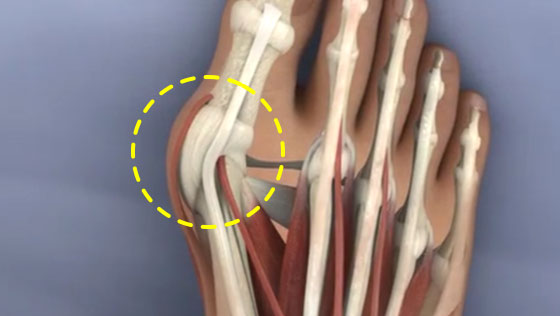What is a High Ankle Sprain?
A high ankle sprain (also known as a syndesmotic ankle sprain) involves injury to one or more of the ligaments that connect the tibia and fibula directly above the ankle joint. Typically, hIgh ankle sprains are more severe, but significantly less common than other types of ankle sprains.
- Approximately 2 million ankle sprains occur every year in the United States[1]
- 5-10% of all ankle sprains are high ankle sprains[2]
- Higher rates of ankle sprains are sustained by athletes between the ages of 18 and 34[3]
Expert Insights
What is a high ankle sprain? - J. Carr Vineyard, MD
Anatomy
The ankle is a complex joint formed by three bones: the tibia, the fibula, and the talus.

Ligaments connect bones to other bones, stabilizing the joint.
The ankle syndesmosis is a group of ligaments that stabilizes the tibia and fibula above the ankle joint.

What is the Cause of an Ankle Sprain?
An ankle sprain is most commonly the result of an injury that forces the ankle ligaments beyond their normal range of motion, causing one or more of the ligaments to stretch or tear. The location of the injury is the main difference between a low ankle sprain and a high ankle sprain, with a high sprain involving the ligaments connecting the tibia and fibula directly above the ankle joint.
A high ankle sprain requires a great deal of force, and frequently is the result of external rotation (outward rotation of the ankle) and/or ankle dorsiflexion (flexing of the foot toward the shin).
Activities that can lead to a high ankle sprain include:
- Engaging in activities that involve falling, jumping, and cutting movements
- Engaging in sports that include physical contact such as football and hockey
Approximately 5-10% of ankle sprains involve injury to the ankle syndesmosis and are considered high ankle sprains. Approximately 85% of ankle sprains are to the lateral ankle ligaments and are a result of an inversion injury[4] (rolling the foot inward). The medial ankle ligaments are much stronger, making them much less likely to tear, but injury can happen as a result of an eversion injury (rolling the foot outward).

What are the Classifications of a High Ankle Sprain?
High ankle sprains are classified by the amount of damage sustained by the affected ligaments:
- Grade 1: ligaments are stretched and may sustain microscopic tears
- Grade 2: ligaments are partially torn
- Grade 3: ligaments are fully torn (ruptured)
Typically, high ankle sprains are much more severe than other types of ankle sprains.
What are the Symptoms of a High Ankle Sprain?
The symptoms of an ankle sprain commonly include:
- Pain
- Inability to bear weight on the affected foot
- Inability to walk on toes
- Swelling
- Bruising
- Tenderness to touch
How is a High Ankle Sprain Treated?
Most individuals who suffer from a high ankle sprain can successfully resolve symptoms through nonsurgical techniques such as:
- Rest and not bearing weight on the affected ankle
- Ice and use of anti-inflammatory medication to reduce inflammation
- Compression of the affected ankle to minimize swelling
- Elevation of the affected ankle to reduce swelling
- Physical therapy including strengthening and proprioception (balance) exercises
- In some cases an ankle boot or brace may be recommended
In severe cases, surgical intervention may be necessary to address a high ankle sprain that cannot be treated with nonsurgical measures. Surgery for a high ankle sprain most commonly involves stabilizing the tibia and fibula by inserting a screw to hold the bones together.
Recovery time from high ankle sprains depends upon the severity of the injury, and individuals most often return to sport between six weeks and six months following the sprain.
Find an Orthopedic Doctor in Your Area





